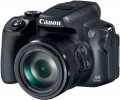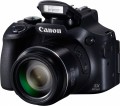DxOMark rating
The result shown by the camera in the DxOMark ranking.
DxOMark is one of the most popular and respected resources for expert camera testing. According to the test results, the camera receives a certain number of points; The more points, the higher the final score.
Sensor
— CCD (CCD). Abbreviation for Charge-Coupled Device. In such sensors, information is read from the photosensitive element according to the “line at a time” principle — an electronic signal is output to the image processor in the form of separate lines (there is also a “frame at a time” variant). In general, such matrices have good characteristics, but they are more expensive than CMOS. In addition, they are poorly suited for some specific conditions — for example, shooting with point light sources in the frame — which is why you have to use various additional technologies in the camera, which also affect the cost.
— CMOS (CMOS). The main advantages of CMOS matrices are ease of manufacture, low cost and power consumption, more compact dimensions than those of CCDs, and the ability to transfer a number of functions (focus, exposure metering, etc.) directly to the sensor, thus reducing the dimensions of the camera. In addition, the camera processor can read the entire image from such a matrix at once (rather than line by line, as in CCD); this avoids distortion when shooting fast-moving objects. The main disadvantage of CMOS is the increased possibility of noise, especially at high ISO values.
— CMOS (CMOS) BSI. BSI is an abbreviation for the English phrase "Backside Illumination". This is the name of "inverted" CMOS sensors, the light on which does not penetrate from the side of the photodiodes, but from the back of the matrix (from the side of the subst
...rate). With this implementation, the photodiodes receive more light, since it is not blocked by other elements of the image sensor. As a result, back-illuminated sensors boast high light sensitivity, which allows you to create images of better quality with less noise when shooting in low light conditions. BSI CMOS sensors require less light to properly expose a photo. In production, back-illuminated sensors are more expensive than traditional CMOS sensors.
— LiveMOS. A variety of matrices made using the technology of metal oxide semiconductors (MOS, MOS — Metal-Oxide Semiconductor). Compared to CMOS sensors, it has a simplified design, which provides less tendency to overheat and, as a result, a lower noise level. It is well suited for the "live" viewing mode (viewing in real time) of the image from the matrix on the screen or in the camera's viewfinder, which is why it received the word "Live" in the title. They also feature high data transfer rates.Total MP
The total number of individual light sensitive dots (pixels) provided in the camera's sensor. Denoted in megapixels - millions of pixels.
The total number of MPs, as a rule, is greater than the number of megapixels from which the frame is directly built (for more details, see "Effective number of MPs"). This is due to the presence of service areas on the matrix. In general, this parameter is more of a reference than practically significant: a larger total number of MPs with the same size and effective resolution means a slightly smaller size of each pixel, and, accordingly, an increased likelihood of noise (especially at high ISO values).
Effective MP number
The number of pixels (megapixels) of the matrix directly involved in the construction of the image, in fact — the number of points from which the captured image is built. Some manufacturers, in addition to this parameter, also indicate the total number of MPs, taking into account the service areas of the matrix. However, it is the effective number of MPs that is considered the main indicator — it is this that directly affects the maximum resolution of the resulting image (see “Maximum image size”).
A megapixel is 1 million pixels. Numerous megapixels ensures high resolution of the captured photos, but is not a guarantee of high-quality images — much also depends on the size of the sensor, its light sensitivity (see the relevant glossary items), as well as hardware and software image processing tools used in the camera. Note that for small matrices, high resolution can sometimes be more of an evil than a blessing — such sensors are very prone to the appearance of noise in the image.
Maximum image size
The maximum size of photos taken by the camera in normal (non-panoramic) mode. In fact, this paragraph indicates the highest resolution of photography — in pixels vertically and horizontally, for example, 3000x4000. This indicator directly depends on the resolution of the matrix: the number of dots in the image cannot exceed the effective number of megapixels (see above). For example, for the same 3000x4000, the matrix must have an effective resolution of at least 3000*4000 = 12 million dots, that is, 12 MP.
Theoretically, the larger the size of the photo, the more detailed the image, the more small details can be conveyed on it. At the same time, the overall image quality (including the visibility of fine details) depends not only on resolution, but also on a number of other technical and software factors; see "Effective MP number" for more details.
Number of scene programs
The number of scene programs provided in the camera design.
Scene programs are preset settings for some of the most common shooting scenes - for example, Portrait, Landscape, Sports, Sunset, etc. In addition to these presets, this list may include special effects and creative tools (such as color swap or fisheye), as well as exposure modes (see below). The presence of scene programs is especially useful for beginners and non-professional photographers, as it eliminates the need to tinker with each setting separately - just select the most suitable program, and all the necessary settings will be set automatically. The more scene programs the camera design provides, the wider its automatic adjustment capabilities.
Exposure compensation
The ability to manually (or automatically, according to predetermined parameters) change the exposure parameters during shooting, that is, the amount of light falling on the matrix. It is used when the automatically selected exposure parameters do not give a satisfactory result — for example, in difficult conditions, when the illumination of the main subject and the background is very different. The camera's exposure compensation capabilities are recorded in the format "± x EV, in y EV increments", such as "± 3 EV, in 1/2 EV increments". The first digit indicates the maximum amount by which the exposure can be changed from the original value by the compensation process; the second is the step (step) with which the change occurs. EV is a specific unit of measure for exposure; a 1 EV change in exposure means a 2x change in the amount of light hitting the sensor. An increase in EV indicates an increase in the amount of light due to opening the aperture or an increase in shutter speed, a decrease indicates the opposite. All modern cameras with exposure compensation function are capable of producing it “in both directions”.
Full HD (1080)
The maximum resolution and frame rate of video captured by the camera in
Full HD (1080p).
The traditional Full HD video resolution in this case is 1920x1080; other options are more specific and practically do not occur in modern cameras. Regarding the frame rate, it is worth noting first of all that a normal (not slow-motion) video is shot at a speed of up to 60 fps, and in this case, the higher the frame rate, the smoother the video will be, the less jerks will be noticeable when moving in the frame. If the frame rate is
100 fps or higher, this usually means that the camera has a slow-motion video mode.
Ultra HD (4K)
The maximum resolution and frame rate of video captured by the camera in
the Ultra HD (4K) standard.
UHD 4K refers to resolutions with a frame size of approximately 4,000 horizontal pixels. Specifically, in cameras for video shooting, resolutions of 3840x2160 and 4096x2160 are most often used. Regarding the frame rate, it is worth noting first of all that a normal (not slow-motion) video is shot at a speed of up to 60 fps, and in this case, the higher the frame rate, the smoother the video will be, the less jerks will be noticeable when moving in the frame. If the frame rate is 100 fps or higher, this usually means that the camera has a slow-motion video mode.

